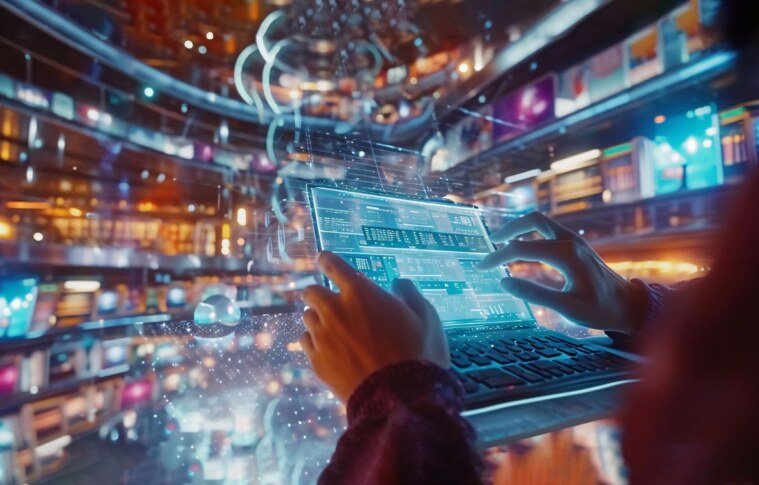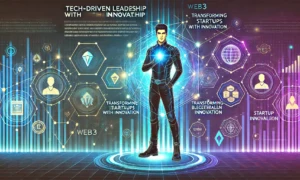The internet as we know it is undergoing a massive transformation. Dubbed Web 3.0, this “new internet” is poised to redefine how we interact with digital platforms, emphasizing decentralization, transparency, and user control. But what exactly is Web 3.0, and how does it differ from the previous iterations of the internet? This blog explores the evolution, key features, applications, and potential challenges of Web 3.0.
The Evolution of the Internet: From Web 1.0 to Web 3.0
Web 1.0: The Static Web
- Era: 1990s to early 2000s
- Characteristics:
- Predominantly read-only.
- Websites were static and informational.
- Limited user interaction (e.g., early forums and emails).
- Example: Yahoo directories, early HTML websites.
Web 2.0: The Interactive Web
- Era: Mid-2000s to present
- Characteristics:
- Focused on user-generated content and social interaction.
- Centralized platforms (e.g., Facebook, Google) dominate.
- Enabled dynamic web applications and widespread mobile access.
- Example: Social media, e-commerce platforms, video streaming sites.
Web 3.0: The Decentralized Web
- Era: Emerging in the 2020s
- Characteristics:
- Built on blockchain technology.
- Peer-to-peer networks replace centralized control.
- Emphasis on data ownership, privacy, and transparency.
- Incorporates AI, machine learning, and semantic web principles.
- Example: Decentralized finance (DeFi), NFTs, and decentralized autonomous organizations (DAOs).
Key Features of Web 3.0
- Decentralization
- Data is stored across distributed networks rather than centralized servers, reducing reliance on tech giants.
- User Ownership
- Users own and control their data, often monetizing it directly if they choose.
- Blockchain Integration
- Blockchain technology ensures secure, transparent transactions and decentralized applications (dApps).
- Artificial Intelligence (AI)
- AI enables smarter, more intuitive systems that understand user intent better.
- Interoperability
- Platforms and applications can interact seamlessly, allowing for better integration of services.
- Tokenized Economy
- Cryptocurrencies and tokens facilitate new economic models, enabling decentralized finance and ownership structures.
Applications of Web 3.0
- Decentralized Finance (DeFi)
- Platforms like Uniswap and Aave enable financial transactions without traditional banks.
- Non-Fungible Tokens (NFTs)
- Unique digital assets representing art, music, or in-game items are revolutionizing ownership in the digital world.
- Decentralized Social Media
- Platforms like Mastodon allow users to control their social identities without relying on centralized servers.
- Digital Identity and Privacy
- Web 3.0 enhances user privacy through secure, verifiable digital identities managed on blockchain networks.
- Smart Contracts
- Self-executing contracts on platforms like Ethereum streamline transactions and reduce the need for intermediaries.
Benefits of the New Internet
- Enhanced Security
- Blockchain’s cryptographic protocols make data breaches and fraud more difficult.
- Greater User Autonomy
- Users control their own data and online presence, reducing dependence on centralized platforms.
- Innovative Business Models
- Token economies and decentralized systems create opportunities for creators and entrepreneurs.
- Reduced Censorship
- Decentralization prevents any single entity from controlling or censoring content.
Challenges Facing Web 3.0
- Scalability
- Blockchain networks currently face limitations in transaction speed and volume.
- Complexity
- Web 3.0 systems require users to understand advanced technologies like wallets, keys, and tokens.
- Energy Consumption
- Some blockchain systems (e.g., Bitcoin) have significant environmental impacts, though newer networks aim to mitigate this.
- Regulatory Uncertainty
- Governments are still grappling with how to regulate decentralized systems and cryptocurrencies.
- Adoption Barrier
- Transitioning from Web 2.0 to Web 3.0 requires significant changes in user behavior and infrastructure.
The Future of Web 3.0
Web 3.0 represents the next phase in the internet’s evolution, prioritizing user empowerment and decentralization. As adoption grows, we can expect:
- Increased development of decentralized applications (dApps).
- Greater integration of AI and machine learning for personalized experiences.
- Enhanced global collaboration through trustless, borderless platforms.
While challenges remain, Web 3.0 has the potential to democratize access to information, empower creators, and redefine how digital ecosystems function.
Conclusion
The “new internet,” or Web 3.0, is more than just a technological upgrade—it’s a paradigm shift. By putting control back into the hands of users, it promises to create a more equitable and transparent digital world. While the road ahead may be complex, the potential benefits make Web 3.0 a journey worth embarking on.
Are you ready to embrace the future of the internet? Let’s start building a decentralized tomorrow, today.
Disclaimer
Posts in the Notebook are written by individual members and reflect personal insights or opinions. Please verify any information independently. If you have any concerns, notify the admin immediately so we can take action before any legal steps are taken.





